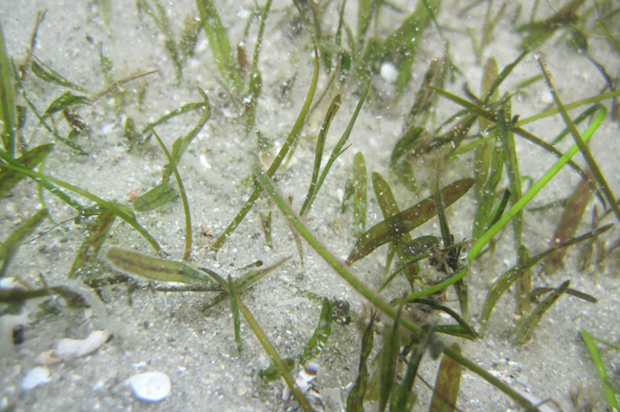Investing in Seagrass Can Yield Big Returns, But It Requires Patience
Seagrass restoration, Virginia coast:
[dropcap]A[/dropcap]s part of a seagrass restoration project at The Nature Conservancy’s Virginia Coast Reserve, volunteers gather reproductive shoots containing ripe seeds from the underwater plants.
Coral reefs get a lot of attention for being showy – but if you’re a young fish, the humble seagrass bed could be just as important, concealing you and serving as your nursery habitat in the same way corals can. This role of seagrass beds has been widely documented, but it has been difficult to put a value on it – either for long-term fish populations or the financial value to a fishery or a community.
Now, a recent study partially funded by the Nature Conservancy puts the potential value of fish protected by a single acre of seagrass at just over $US200K per year. The twist is, no one gets to cash in on that value until the fish grow up.
A Tipping Point for Seagrass Restoration?
These findings could be critical because, in almost every coastal region around the world, the area of seagrass beds is shrinking due to seafloor disturbance and impaired water quality, especially nitrogen from coastal lawns and septic systems.
And while restoration techniques have improved in the past decade, it remains difficult and expensive to restore seagrass beds. Think of all the work that goes into planting a flower bed, then imagine doing it underwater, in SCUBA gear, over many hectares. Restoration costs can range from $9,000 to over $1M per hectare.
Of course, a thriving bed of seagrass has beauty, function, and value apart from what it means to fisheries, but knowing what it contributes to improving fisheries stocks can help put the cost of restoration into better perspective. “I have always loved diving on seagrass beds,” says the study’s lead author, Philine zu Ermgassen. “From a distance they seem lawn like, but up close you get occasional glimpses of the small fish and crustaceans they provide valuable refuge to. This is one of the many reasons I feel that seagrass conservation is well worthwhile, and it is great to finally have put a number on the economic value of the commercial fish they may support.”
The authors of this study estimate the potential for intact seagrass beds to improve stocks of 13 fish species in southern Australia, using a method first developed to assess the value of oyster reef restoration in the southeastern United States.
Read full Nature Conservancy story.



